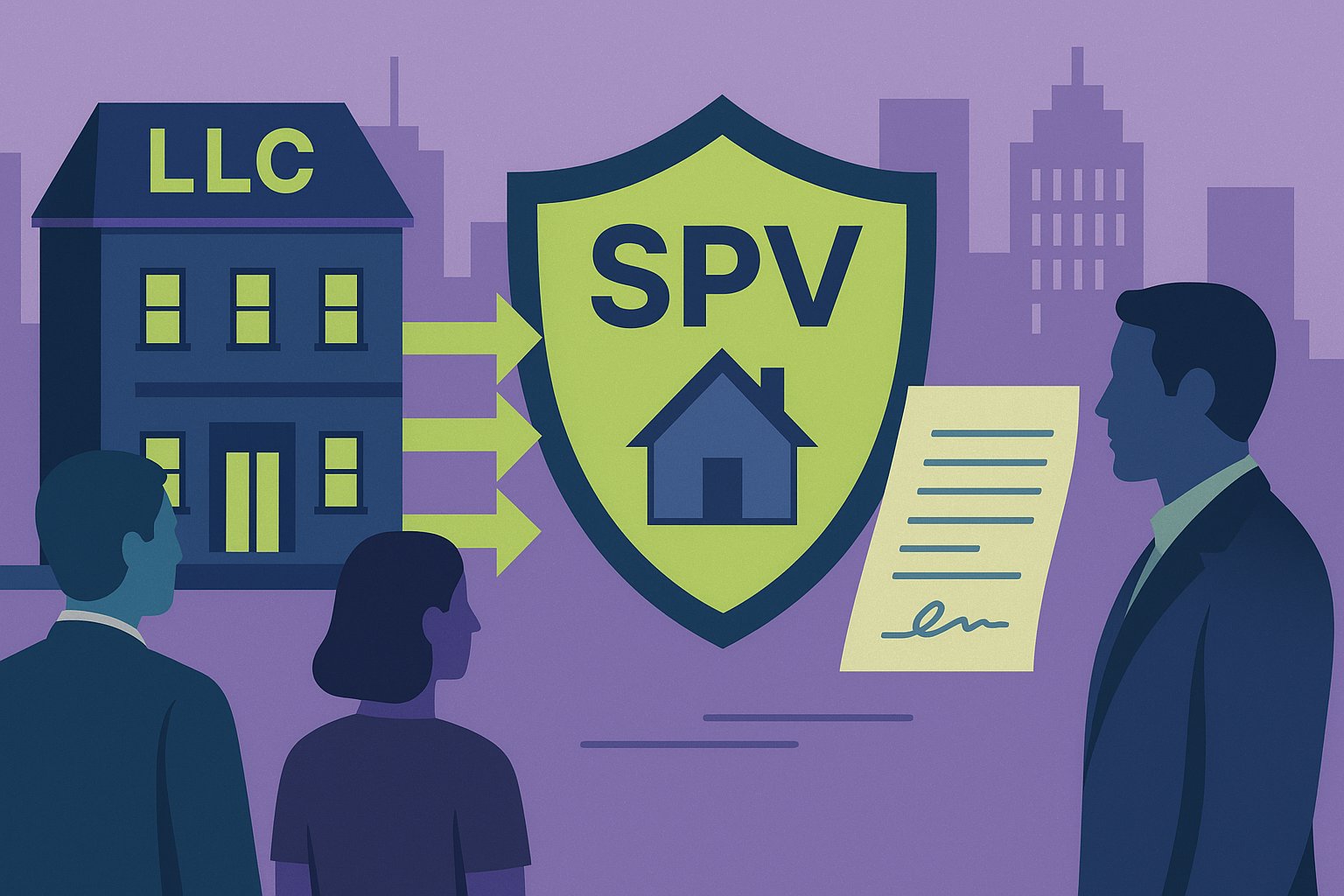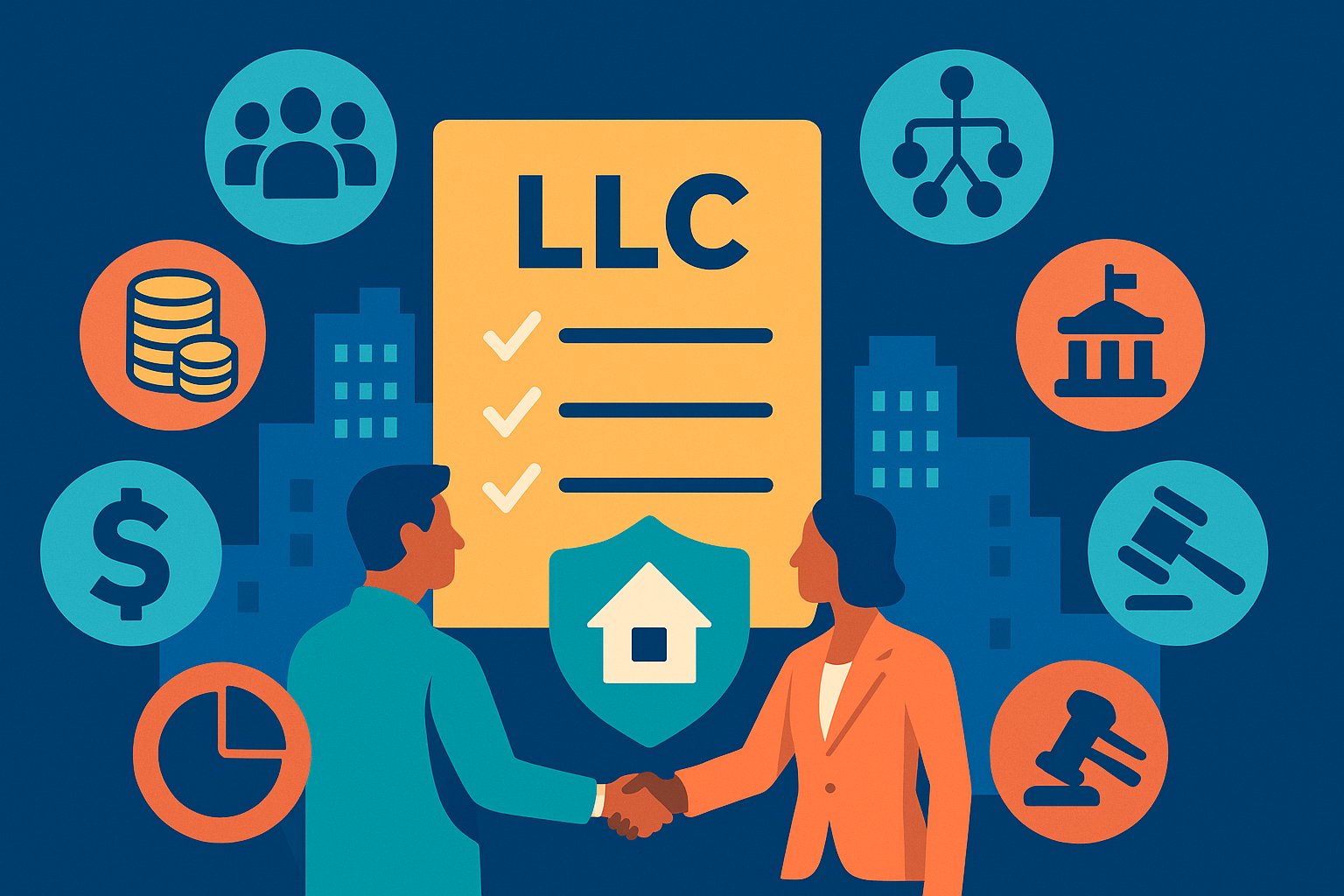Setting the Stage: Why Your Legal Vehicle Shapes the Deal
Choosing the right legal structure for a crowdfunded real estate investment isn’t just a technicality—it’s the foundation that underpins liability protection, tax treatment, governance, and investor appeal. In the bustling world of crowdfunding platforms, deal sponsors and investors encounter two predominant vehicles: the traditional Limited Liability Company (LLC) and the more specialized Special Purpose Vehicle (SPV). Though they share core characteristics—limited liability, pass-through taxation, and flexible governance—key distinctions influence the speed of deal execution, administrative complexity, cost structure, and the clarity of ownership interests. Understanding these nuances empowers both sponsors and participants to tailor their approach to risk tolerance, regulatory requirements, and exit strategies.
Decoding the LLC Framework: Versatility in Structure
The LLC has long been the workhorse of U.S. real estate investing, prized for its simple formation process, flexible management options, and favorable tax treatment. At its heart, an LLC is a hybrid entity combining corporate liability protection with partnership-style pass-through taxation. Sponsors often elect to treat the LLC as a partnership for tax purposes, allowing income, deductions, and credits to flow directly to members’ personal returns. This format accommodates multiple assets under one umbrella, ideal for small portfolios or joint ventures where investors share control and decision-making. Operating agreements define capital contributions, voting rights, profit splits, and procedures for admitting new members or transferring interests—features that can be customized to reflect each deal’s unique governance needs.
Unpacking the SPV Model: Precision and Focus
In contrast, an SPV emerges as a single-purpose entity designed solely to hold one real estate asset or project. Typically structured as an LLC or limited partnership, the SPV isolates asset-level liabilities—such as construction defects, environmental claims, or lender recourse—ensuring they remain contained within a ring-fenced vehicle. Crowdfunding platforms leverage SPVs to streamline fractional ownership: rather than each investor joining a master LLC with multiple properties, individual SPVs are spun up for each offering. The result is laser-focused transparency—one set of financials, one asset-performance report, and streamlined tax reporting. By simplifying ownership and isolating risk, SPVs facilitate faster closings and standardized documents, appealing to both sponsors scaling deal flow and investors seeking clarity.
Deal Formation Dynamics: Speed Versus Flexibility
When time is of the essence, SPVs often hold the advantage. A standardized SPV template allows sponsors to replicate formation documents, subscription agreements, and operating covenants across dozens of deals, slashing legal fees and deal timelines. Automated platforms can spin up SPVs in days, enabling swift capital raises once marketing materials are ready. LLCs, especially custom multi-asset vehicles, demand more bespoke operating agreements, prolonged negotiations among co-investors, and nuanced tax elections. That flexibility, however, can be a boon when structuring complex joint ventures, waterfall distributions, or bespoke governance provisions. Sponsors weighing repeat transactions or managing multiple asset classes might favor a master LLC, while those launching single-asset crowdfunding offerings often gravitate toward SPVs for their repeatable efficiency.
Liability Containment: Ring-Fencing Risk
Both LLCs and SPVs offer limited liability protection, shielding members’ personal assets from entity-level debts and claims. Yet SPVs excel at ring-fencing: by design, the SPV holds only the assets and liabilities tied to its dedicated project. Should a catastrophic event—such as a major construction mishap or environmental lawsuit—occur, the damage is confined. A master LLC owning ten properties under one roof could expose all assets to a single liability claim, potentially jeopardizing the entire portfolio. Careful sponsors may counter this risk by forming multiple LLCs, each owning a subset of properties, but this approach introduces administrative overhead. For crowdfunding, where deal sponsors may have limited personal stake, SPVs provide an added layer of financial insulation for both the sponsor and the investors.
Tax Treatment and Reporting: Pass-Through Versus Complexity
Tax efficiency ranks among the top attractions of pass-through entities. Both LLCs and SPVs generally avoid double taxation, flowing profits and losses through to members. However, SPVs simplify tax reporting for investors. Because each SPV issues one set of K-1s reflecting a single property’s income and expenses, investors can more easily track performance, claim depreciation, and manage their tax obligations. In a multi-asset LLC, K-1s aggregate results across diverse properties, requiring investors to disentangle which deductions and credits pertain to which asset. Sponsors may also structure SPVs as limited partnerships to accommodate tiered distribution waterfalls or carried interest for sponsors. While this can add complexity, platforms typically provide standardized tax packages, making SPV-based investments more accessible to first-time crowdfunding participants.
Governance and Investor Control: Balancing Oversight
The LLC’s flexible governance model allows members to tailor management structures—from member-managed to manager-managed formats—granting investors proportional voting rights or delegating control to a professional sponsor. In bespoke LLC joint ventures, investors might negotiate board representation, veto rights on major decisions, or specific information covenants. SPVs, on the other hand, tend to adopt a manager-managed LLC structure with the platform or sponsor holding all decision-making authority. This approach streamlines operations and reduces negotiation among large investor pools, but it also limits investors’ direct control. For those comfortable entrusting day-to-day oversight to experienced sponsors, SPVs offer a frictionless experience. Investors desiring greater influence might seek LLC deals outside crowdfunding platforms or negotiate bespoke side letters—though these can complicate the process and increase legal costs.
Cost Considerations: Weighing Formation and Maintenance Fees
Cost factors play a pivotal role in legal structure choice. Forming and maintaining an LLC involves state filing fees, registered agent costs, and periodic franchise taxes or annual report filings. A single-asset SPV incurs similar expenses—but because SPVs are standardized across multiple offerings, sponsors can achieve economies of scale in drafting documents and conducting due diligence. Crowdfunding platforms often absorb formation fees or bundle them into offering costs, passing a transparent flat fee or basis point charge to investors. For sponsors managing dozens of deals, SPVs deliver predictable, repeatable costs that can be budgeted and recouped through investor fees. By contrast, a standalone bespoke LLC may require larger one-time legal investments, making smaller deals or infrequent offerings economically unviable.
Regulatory Compliance: Navigating Securities Exemptions
Real estate crowdfunding offerings are subject to securities regulations, and both LLCs and SPVs must comply with relevant exemptions. SPV-based offerings typically rely on Reg D Rule 506(b) or 506(c), allowing sponsors to raise unlimited capital from accredited investors with limited public advertising (for 506(b)) or general solicitation (for 506(c)). Some platforms pursue Regulation A+ to tap nonaccredited investors, though the process involves more rigorous SEC review and ongoing reporting. Custom LLC joint ventures may pursue similar exemptions but often target institutional or high-net-worth investors directly. Investors should examine the offering memorandum for the SPV or LLC deal, paying close attention to eligibility requirements, disclosure schedules, and ongoing reporting obligations to ensure compliance and transparency throughout the investment lifecycle.
Aligning with Exit Strategies: Liquidation Versus Long-Term Hold
The anticipated exit strategy can tip the scales in favor of one structure over the other. For short-term value-add projects—where sponsors aim to renovate, lease up, and sell within two to four years—an SPV’s finite lifespan dovetails neatly with the exit horizon. Upon sale, the SPV dissolves, distributing proceeds to investors and closing the entity. Sponsors can then spin up a fresh SPV for the next opportunity. Long-term hold strategies—such as buy-and-hold rental portfolios—may favor a master LLC structure, reducing entity formation and dissolution cycles. Rolling capital contributions and refinancings become smoother within a single LLC housing multiple properties. However, investors should consider the trade-off: fewer formations mean less cost and fewer entities to manage, but also a greater mix of assets under one umbrella, with potential cross-asset liability exposure.
Investor Takeaways: Matching Structure to Strategy
For crowdfunding participants, the choice between an LLC and an SPV largely hinges on deal size, strategy, regulatory comfort, and desired level of involvement. If you seek clear, single-asset exposure, predictable tax reporting, and limited decision-making responsibilities, SPV-based offerings provide streamlined access to professionally managed projects with built-in risk isolation. If you prefer greater governance input, the ability to aggregate multiple assets, or a long-term joint venture relationship outside a standardized platform, a bespoke LLC may better suit your objectives. Always review offering documents meticulously—scrutinize operating agreements, fee schedules, waterfall structures, and dissolution provisions—to ensure the legal vehicle aligns with your risk tolerance, investment timeline, and tax goals.
Building Confidence Through Clarity
The legal structure underpinning your crowdfunded real estate deal shapes every facet of your investment—from the speed of deal execution and cost overhead to liability containment, tax efficiency, and governance rights. By contrasting traditional LLC frameworks with the specialized SPV model, investors and sponsors can harness the strengths of each vehicle to match their unique deal flow and risk preferences. Whether you onboard as a passive SPV member on a leading crowdfunding platform or negotiate a custom LLC joint venture with trusted partners, a clear grasp of structure mechanics fosters confidence and informed decision-making. Armed with this comparative roadmap, you’re ready to navigate the complexities of real estate crowdfunding and deploy capital in vehicles that work best for your goals.




